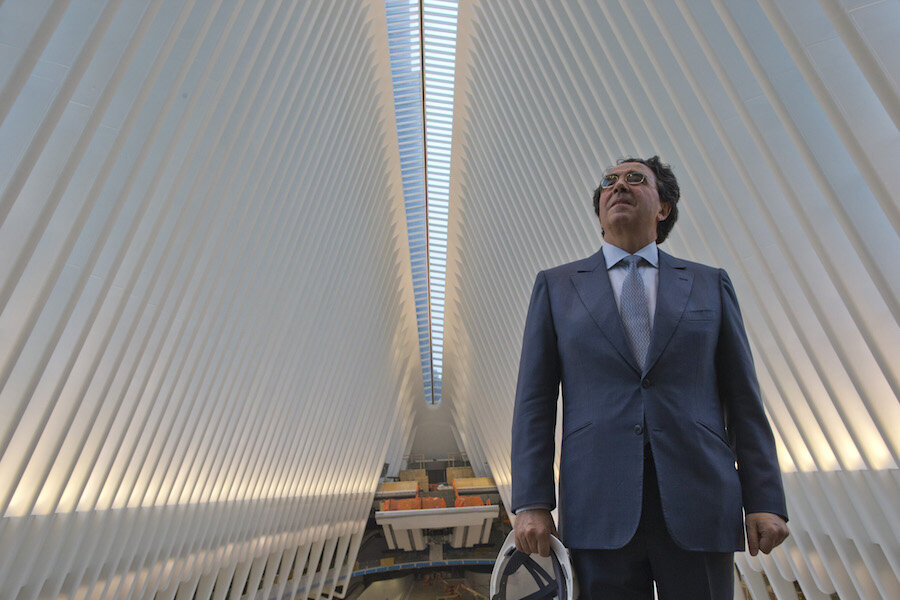The $3.9 billion WTC Hub: Symbol of defiant renewal or just excess?
Loading...
New York City's newest transport center, built over the site of the World Trade Center subway station destroyed on Sept. 11, 2001, will open this week. It will serve both as a transportation hub and a memorial.
The Spanish-born architect, Santiago Calatrava, designed it to resemble a bird spreading its wings to fly, but budget concerns have clouded the station’s take-off date.
"The thing is a symbol of excess," said Patrick Foye, the outgoing New York Port Authority executive director, in an interview with Politico New York.
The Oculus hub, named for the design of the architecture, will connect PATH trains from New Jersey to 11 New York City subway lines and ferries and allow access to several buildings in the World Trade Center. The center, the third largest in New York, will serve an estimated 200,000 commuters a day, according to the Port Authority.
The hub is designed to resemble a bird leaping into flight. The ribs of the bird create a lofty space for commuters to look out at the surrounding area while steel wings stretch out, ready to fly.
The price for the design? Years longer and billions of dollars more than expected.
Mr. Calatrava’s 2004 design had a budget of $2 billion and an opening date of 2009. Parts of the hub will open March 3, although trains have used it for months, and a full-fledged opening will come later this spring.
The final cost of the project: $3.9 billion, according to the Port Authority.
For some, the costs and delays have tainted the Oculus’s symbolic opening.
"The cost of projects, big and small, matters — a lot,” said Mr. Foye said in a statement. The cost overruns “consume precious resources and undermine public confidence,” he said.
Critics of the project claim the design looks less like a bird and more like a dinosaur's fossilized bones.
But others remain enamored of the ambitious project.
"Gorgeous," said David Pompey, a 40-year-old New York resident who worked on the Oculus. "I can't really say. But it's breathtaking."






